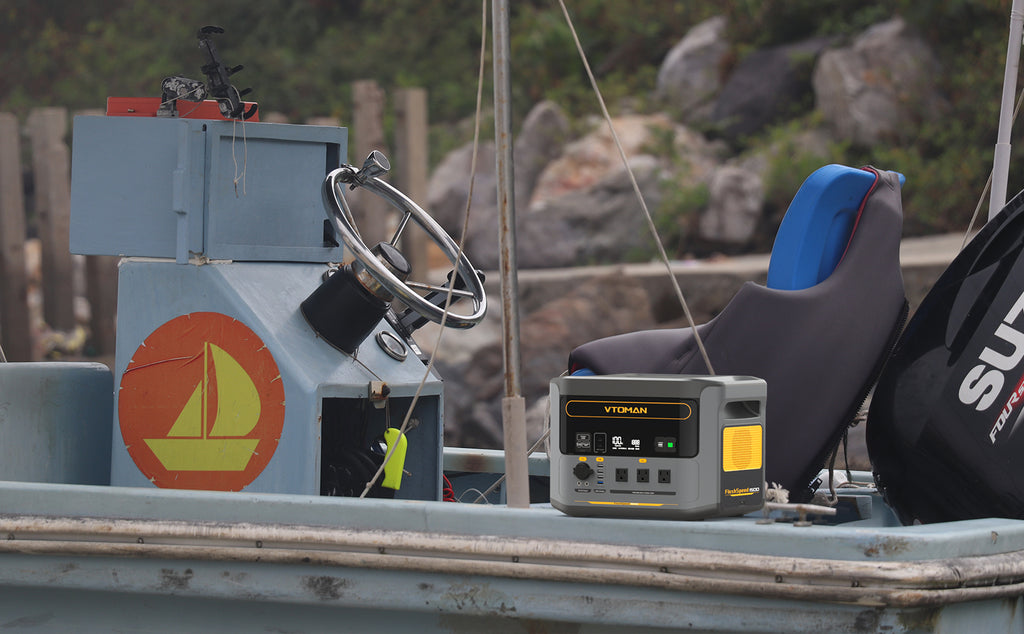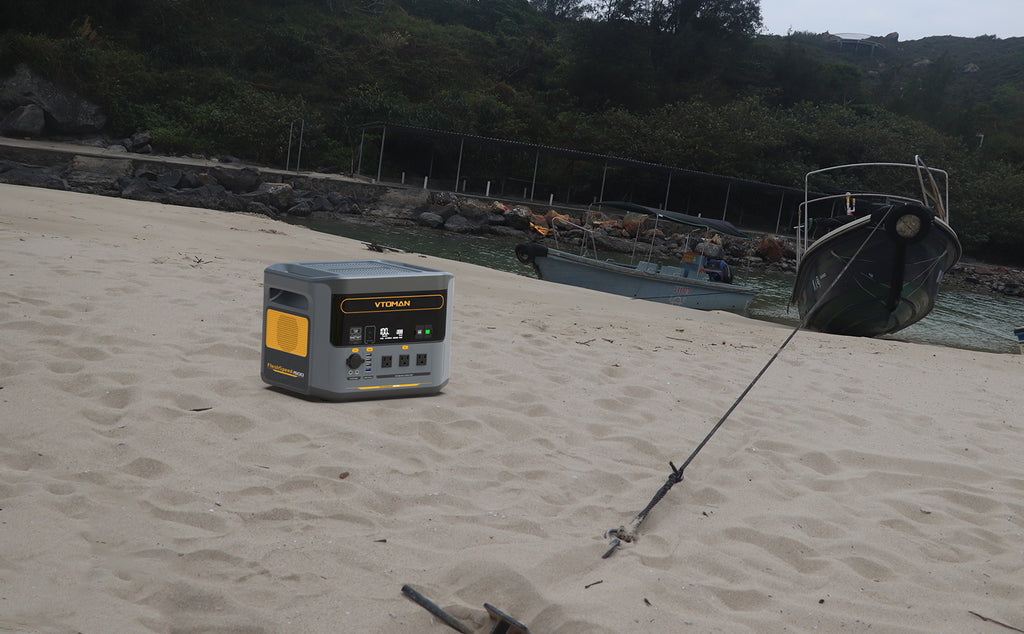As we chart a course towards more sustainable and self-sufficient boating practices, the role of solar solutions cannot be overlooked in this green transition. This article sets sail into the world of solar battery chargers for boats, a pivotal innovation steering boaters towards sustainability and independence.
We'll explore how these devices harness solar energy to ensure boats remain charged and ready, offering a greener alternative to traditional power sources. From the benefits of adopting solar chargers, including reduced carbon emissions and cost savings, to a guide on choosing the right charger based on boat size and energy needs, we aim to navigate you through everything you need to know.
Whether you're a casual boater or a seasoned mariner, understanding solar battery chargers can significantly enhance your maritime experience, aligning it with eco-friendly practices. Join us as we dig into the essentials of solar charging on the water, making your boating adventures both sustainable and self-sufficient.
What Is a Solar Battery Charger for a Boat?
A solar battery charger for a boat is a device that employs solar panels to harvest energy from the sun, converting it into electrical power to charge the boat's battery system. This setup ensures that the battery is continually charged, thus maintaining the boat's operational readiness and extending the battery's lifespan. Unlike traditional charging methods, solar chargers offer a green, cost-effective alternative that leverages renewable energy, reducing dependence on shore power and fossil fuels.
Benefits Of Solar Battery Charger For a Boat
The adoption of solar battery chargers brings forth multiple advantages:
- Eco-Friendly: Solar energy is clean, reducing carbon emissions and contributing to environmental conservation.
- Cost-Efficient: After the initial setup cost, solar charging eliminates the expense of purchasing fuel or paying for shore power.
- Maintenance-Free: Solar chargers require minimal maintenance, making them a hassle-free option for boat owners.
- Independence: They provide energy autonomy, allowing boaters to venture further without worrying about recharging stations.
- Battery Health: Consistent and gentle charging protects the battery against the wear and tear of fluctuating voltages.

Common Types of Solar Battery Charger for a Boat
Solar battery chargers come in various forms, each catering to specific needs:
| Type | Description | Applications |
| Portable Solar Chargers | Compact and lightweight, designed for ease of transport and temporary setups. Ideal for smaller boats or quick, easy charging on the move. | Charging small batteries like those for fishing gear, smartphones, and light systems on small boats or kayaks. |
| Fixed Solar Panel Chargers | Permanently mounted, larger, and more robust than portable options, designed to withstand marine environments. | Maintaining the charge of the boat's main battery and auxiliary batteries, suited for larger recreational boats, yachts, and sailboats. |
| Flexible Solar Chargers | Made with thin-film solar cells that can bend to fit curved surfaces, lightweight, can be mounted without significant structural support. | Boats with limited flat space or aiming to maximize solar exposure without heavy installations. |
| Solar Trickle Chargers | Provide a small, continuous charge to prevent natural battery discharge over time. | Maintaining battery charge during periods of inactivity or storage, suitable for all types of boats. |
| Solar Panel Kits with Controllers | Kits include solar panels, a charge controller, and sometimes additional accessories. Charge controller prevents overcharging. | Those seeking a comprehensive charging solution tailored to their boat's needs, from small vessels to larger yachts. |
| Marine-Grade Solar Chargers | Designed for the marine environment, resistant to saltwater corrosion, high humidity, and often waterproof. | Essential for boats regularly exposed to harsh marine conditions, including commercial vessels and sailboats undertaking long voyages. |
What Size Solar Battery Charger Is Needed for a Boat?
| Boat Size | Average Daily Wattage Consumption (Wh) | Solar Charger Size (Watts) |
| Small (up to 20ft) | 300 - 600 | 70 - 150 |
| Medium (21ft to 35ft) | 600 - 1200 | 150 - 300 |
| Large (36ft to 50ft) | 1200 - 2400 | 300 - 600 |
| Very Large (over 50ft) | 2400+ | 600+ |
In fact, determining the right size involves considering several factors:
- Energy Consumption: Calculate the daily power usage in watt-hours (Wh) by listing all electrical devices and their consumption over time.
- Battery Capacity: Understand your battery's total capacity (in amp-hours, Ah) to ensure the charger can fully replenish it during sunlight hours.
- Sunlight Exposure: Account for the average sunlight hours your boat will receive, which varies by location and season.
- Charger Efficiency: Factor in the efficiency of the solar charger, as not all the captured sunlight is converted into usable electricity.
A simple formula to estimate the required wattage of the solar panel is:
Required Wattage=Daily Energy Consumption (Wh)÷Sunlight Hours÷Charger EfficiencyFor example, if your boat uses 600Wh per day, receives 5 hours of sunlight, and you choose a charger with 75% efficiency, you would need:
Required Wattage=600÷5÷0.75=160 wattsThis calculation offers a starting point, but consider a margin for cloudy days and future power needs.
Is a Portable Solar Generator Better Than Solar Charger for a Boat?
Choosing between a portable solar generator and a solar charger mainly depends on your specific needs. If you need a comprehensive power solution that can directly power AC appliances and enjoy the flexibility of a portable unit, a portable solar generator is better. However, if your focus is solely on efficiently charging your boat's batteries with a lightweight and less expensive option, a solar charger is the superior choice.
If you intend a solar generator for your boat and struggle to find the right size, you can refer to the table below:
| Boat Size | Average Daily Wattage Consumption (Wh) | Solar Generator Size (Watts) |
| Small (up to 20ft) | 300 - 600 | 250 - 500 |
| Medium (21ft to 35ft) | 600 - 1200 | 500 - 1000 |
| Large (36ft to 50ft) | 1200 - 2400 | 1000 - 2000 |
| Very Large (over 50ft) | 2400+ | 2000+ |

Boating With VTOMAN
Take the VTOMAN Jump 1500W/2376Wh 220W Solar Generator on your next boating trip!
Compact yet powerful, this generator delivers 1500W of pure sine wave energy, peaking at 2000W, to keep everything from navigation systems to comfort appliances up and running. Its 2376Wh capacity ensures your journey is long-lasting, while the 220W solar input maximizes efficiency by harnessing the sun's power. With the ability to charge multiple devices simultaneously across 12 outputs and featuring a durable LiFePO4 battery that promises 3100+ life cycles to 80%, the VTOMAN Jump is the epitome of reliability. Whether you find yourself needing to jump-start your boat or simply want to ensure all your devices are charged, this solar generator's versatility, coupled with three easy charging options (wall, solar, car), makes it a must-have for any boater seeking peace of mind on the water.
The Bottom Line
In the vast and ever-evolving world of boating, integrating solar power through the use of solar battery chargers represents a forward-thinking approach to sustainable maritime adventure. Whether you're maneuvering a small kayak or steering a large yacht, understanding your boat's energy requirements and matching them with the right size solar charger or generator ensures that you harness the power of the sun effectively.
With options ranging from the highly portable to the permanently mounted, and from trickle charging to comprehensive solar kits, the flexibility and benefits of solar power are undeniable. Furthermore, the VTOMAN Jump 1500W/2376Wh 220W Solar Generator exemplifies the pinnacle of solar technology's offerings to boaters, combining portability, power, and durability in one compact unit.
Read More
- Portable Solar Generators for RVs: Everything You Need to Know – VTOMAN
- Using a Portable Power Station to Survive This Snow Storm Season – VTOMAN
- Top 9 New Year's Resolutions for 2024: Live More Sustainably – VTOMAN
- How Many Solar Panels Do I Need for Camping? – VTOMAN
- How to Make Coffee While Camping Without Fire – VTOMAN












